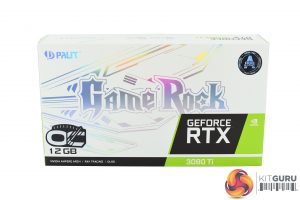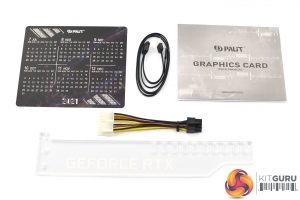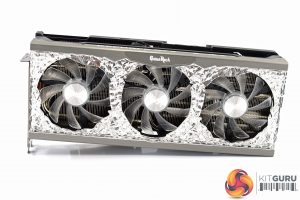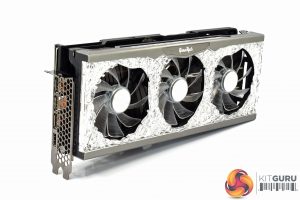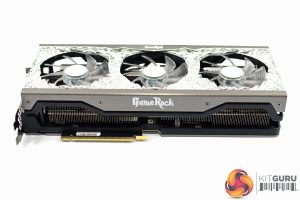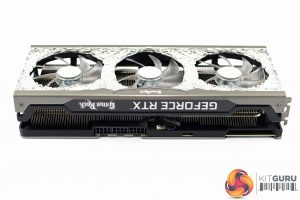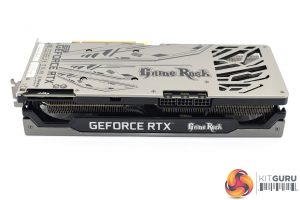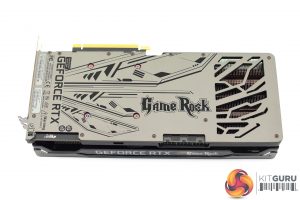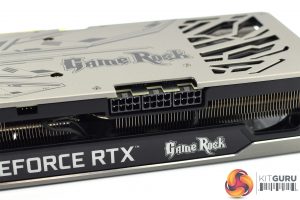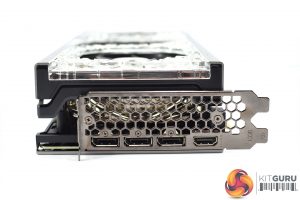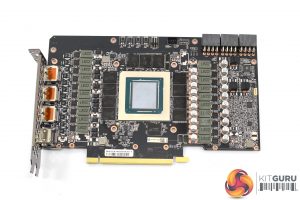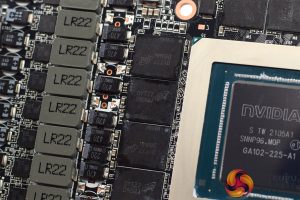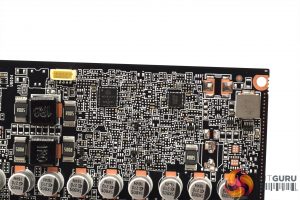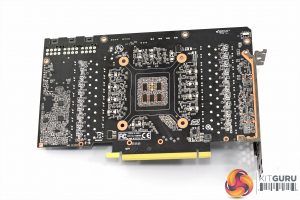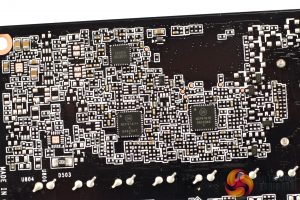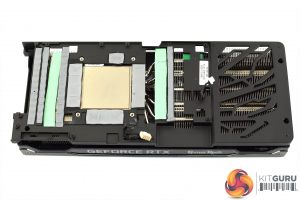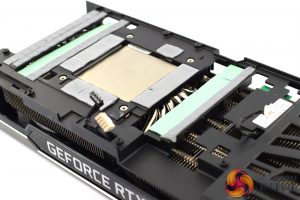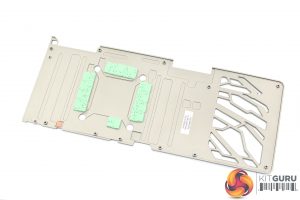The last card to look at is the Palit RTX 3080 Ti GameRock OC. This ships in a white box, with the GameRock logo taking pride of place on the front.
Inside we find a couple of documents, one ARGB cable, one 2x 6-pin to 1x 8-pin power adapter, as well as a plastic support bracket which can be used to help support the graphics card once it's installed.
The card itself is identical to the RTX 3090 GameRock OC we reviewed earlier this year, which of course makes a lot of sense. It's another striking design, with lots of crystal-like plastic visible on the shroud. As shown in our video, this acts as a giant diffuser for the RGB lighting, which is certainly an impressive visual touch.
We can also note three 90mm fans, with translucent fan blades also designed to aid with the RGB lightshow.
In terms of sizing, this is another big graphics card. It measures in at 304 x 136 x 60mmm so you will again need three free expansion slots in your chassis.
As for the backplate, this is quite a striking design, with the GameRock logo positioned in the middle. It’s a hefty slab of metal, with a few cut-outs toward the end to allow airflow through the heatsink.
We can also note a dual-BIOS switch positioned on the front edge of the card, with a choice between the Performance BIOS (400W power limit) and the Silent BIOS (370W power limit).
Three 8-pin power inputs are required, while three DisplayPort 1.4 and 1x HDMI 2.1 ports are on offer.
Taking the card apart to look at the PCB, we can see Palit has opted for a ‘beef up' VRM, with a total of 22 phases, which we'd expect to be split with 18 for the GPU and 4 for the memory. OnSemi's NCP302150 MOSFETs are used, rated for 50A average current output, while we can note two OnSemi NCP81611 controllers and one NCP81610 controller, alongside two UPI uS5650Q controllers.
We can also note Micron's GDDR6X memory, model code 0YT77D8BWW.
As for the heatsink, this uses two aluminium finstacks connected by a total of 6x 6mm heatpipes. The finstacks themselves are covered by a large die-cast plate, and this contacts with the VRM and VRAM via thermal pads. A central baseplate contacts with the GPU die.
It's also good to see Palit using thermal pads on the backplate to contact with the back of the memory modules.
 KitGuru KitGuru.net – Tech News | Hardware News | Hardware Reviews | IOS | Mobile | Gaming | Graphics Cards
KitGuru KitGuru.net – Tech News | Hardware News | Hardware Reviews | IOS | Mobile | Gaming | Graphics Cards


